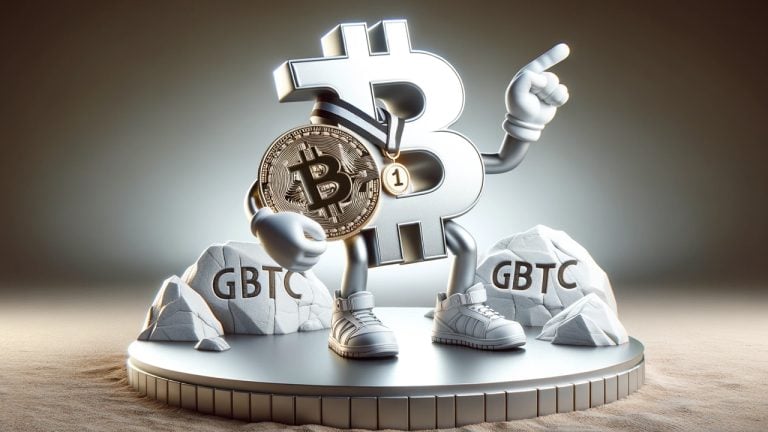How Serious is the Looming Cryptocurrency Bear Market?

In 2019 alone, BTC surged by over 800 percent. Today, 1 Bitcoin is easily exchanged for $20,000 USD at many regulated exchanges across the world.
The volatility of cryptocurrencies combined with their limited utility makes them difficult to value as investments—especially when compared to traditional assets such as stocks or bonds. Many would consider cryptocurrencies, like Bitcoin, to trade more as a commodity because of its generation and markets.
Due to the price collapse of several internationally known cryptocurrencies, starting with LUNA, and ending up with Celsius, 3AC, and many more yet to be discovered. The insolvency of these companies led to cascading liquidations which flooded the market with lower prices as a fire sale bank run was underway.
It seems that these events investors have turned away from digital coins and tokens altogether. This phenomenon is known as the crypto “bear” market. In this article we discuss what exactly constitutes a cryptocurrency bear market, how long it lasts, and ways that traders and investors can survive one. We also explore some best practices to help navigate this tumultuous period.
What is a Bear Market?
A bear market refers to any sharp decline in prices paired with lower investor sentiment. Although there are many factors that affect whether a bear market will be classified as a crash or just a temporary drop in prices, three key indicators typically define these events.
- Price performance during previous periods
- Volume during recent trading sessions
- Expected future trends
Bear markets tend to occur following sustained growth and bullish sentiment throughout the entire market cycle. Typically, they begin when a major event occurs like regulatory changes, new competition, etc. For example, the stock market fell sharply after Brexit due to concerns about the impact of leaving the EU on global trade.
Once the catalyst behind the fall is identified, investors may start selling shares en masse. While individual investors might remain positive overall, institutional money flows into other areas where riskier opportunities exist. When institutions move funds out of safer investments, liquidity dries up and prices inevitably collapse.
This pattern is especially true across emerging economies, which have experienced large losses in equities and commodities over the past year. According to CNBC, 80% of emerging market currencies lost ground against the US Dollar while 90% dropped versus gold. Many consider bear markets a useful time to harvest tax losses. This strategy involves selling an asset at a loss in order to offset potential gains. In our taxbit cryptocurrency tax software review, we indicate how their software tracks cost-basis for this tax loss harvesting.,
Bull Market vs Bear Market Environments
While most people refer to bear markets as negative investment scenarios, others prefer to call them bull markets because they believe that prices will rise again eventually. Of course, both terms depend heavily upon investor sentiment and expectations, but generally speaking, if enough pessimists join forces, the collective belief becomes reality.
One way to distinguish between a bull and bear market is based on volume. If volumes soar high above average, then a bearish trend is occurring. On the flip side, if volumes decrease significantly below average, then a bullish rally is taking place. Volatility plays another important factor too. High levels of volatility indicate extreme fear among buyers/investors, thus indicating that a panic sell off could happen soon. Conversely, low levels of volatility suggest that prices are increasing steadily without much resistance.
Best Strategies to Overcome a Crypto Bear Market
Bitcoin bears face two primary challenges that make surviving challenging. First, they lack access to hedging tools traditionally used to manage bear markets. Second, the majority of available information regarding short-term movements comes directly from social media platforms like Twitter and Reddit. However, unlike experts who use data analytics to predict real estate values or oil demand, those relying solely on online forums often get caught off guard. To address these issues, here are five strategies that successful investors should consider implementing before making big trades.
Dollar-Cost Averaging (DCA)
If you purchased bitcoins back in 2017, chances are you bought at lower prices than today. A common practice called dollar cost averaging suggests buying your desired commodity regularly rather than allocating your capital towards a specific sale price. DCA prevents you from being front-runned and helps even out returns over time.
Many people DCA a percentage of income to investments. For example, after-tax income can be allocated 20% to stocks/securities and 5% to cryptocurrency. Every investor has a unique risk profile and goals, so these numbers are meant more for an example.
For instance, let’s say you wanted to invest in Facebook Inc., so you decided to buy 100 units worth $100 each every month instead of investing everything in a lump sum. Based on historical pricing data, you expect Facebook’s share price to go down slightly over the next few weeks. Since you’re not ready to take profits yet, you decide to keep holding on until things calm down. After several months, you check Facebook’s daily chart and notice that the company’s share price is now stable. You’ve averaged your expenses over time, making sure you aren’t paying extra for something that isn’t going anywhere.
Consumers who purchased Apple Inc. products during Black Friday sales were able to save hundreds of dollars thanks to special offers and promotions. But did you know that companies including Amazon.com, Best Buy Co., Target Corp., Staples Inc., JCPenney Co., Sephora, and Office Depot offer similar discounts? So why don’t more consumers try saving money by shopping around? Using smart comparison sites that compare product prices and retail deals across different vendors is a great way to find good deals on popular items. One way to “stack satoshis”, or make small purchases of Bitcoin regularly, is to signup for a free bitcoin cashback program, such as Lolli. All purchases online are eligible for Bitcoin back. It’s a risk-free way to stack satoshi for a possible future bull run.
We hope you found this guide helpful! It’s certainly not an exhaustive list of tips and tricks related to crypto bear markets. There are still plenty of uncertainties facing the industry, so stay tuned for updates in the space as they occur.
Powered by WPeMatico








